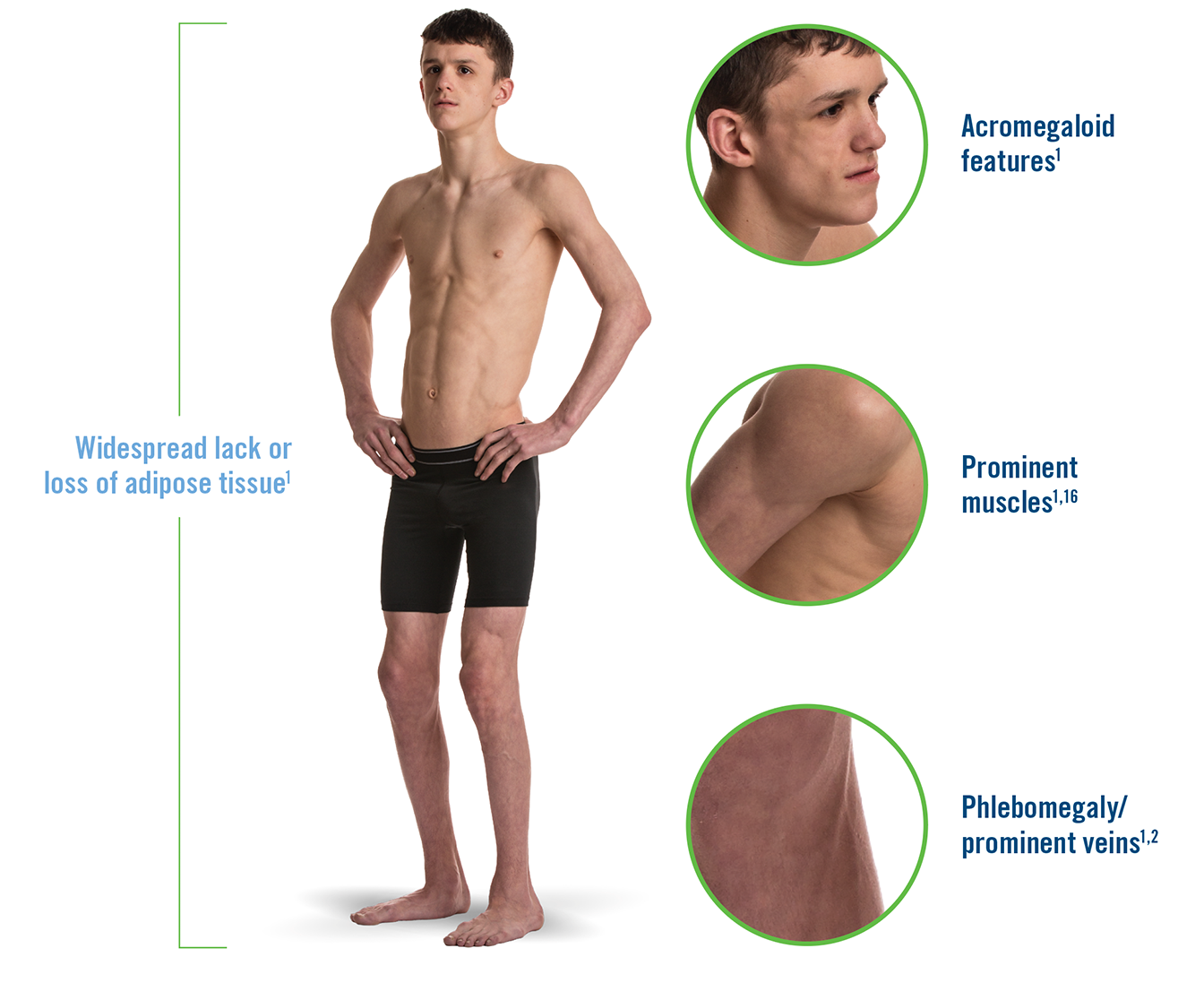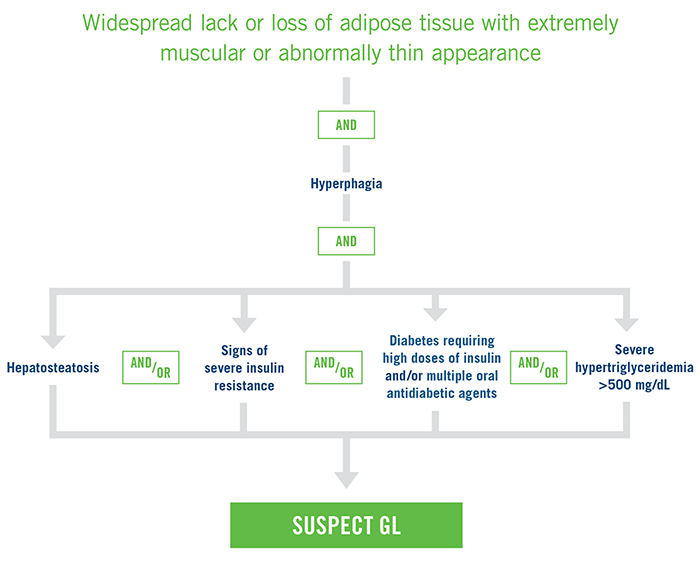Would you recognize a patient with GL ?

Would you recognize a patient with GL ?
Diagnosing GL
Physical features are important diagnostic indicators of generalized lipodystrophy (GL).2
Typical Presenting Features
Congenital GL:
Generalized lack of subcutaneous fat with muscular appearance, acromegaloid features, and umbilical prominence1,2
Acquired GL:
Generalized subcutaneous fat loss that is usually insidious (over years) but can sometimes be rapid (over weeks); more common in females1,2

Consider generalized lipodystrophy (GL) in your differential diagnosis2
- Currently, there are no defined serum leptin levels to establish a diagnosis of GL. 2
- Although firm diagnostic criteria have not been established for GL, there is consensus that a group of clinical characteristics should raise the suspicion of GL.
The figure below highlights those key clinical characteristics.1,2,12

1. Handelsman Y, Oral EA, Bloomgarden ZT, et al. The clinical approach to the detection of lipodystrophy—an AACE consensus statement. EndocrPract. 2013;19(1):107-116. doi:10.4158/endp.19.1.v767575m65p5mr06. 2. Brown RJ, Araujo-Vilar D, Cheung PT, et al. The diagnosis and management of lipodystrophy syndromes: a multi-society practice guideline. J Clin Endocrinol Metab. 2016;101(12):4500-4511. doi:10.1210/jc.2016-2466. 12. Garg A. Acquired and inherited lipodystrophies. N Engl J Med. 2004;350(12):1220- 1234. doi:10.1056/NEJMra025261. 16. Javor ED, Moran SA, Young JR, et al. Proteinuric nephropathy in acquired and congenital generalized lipodystrophy: baseline characteristics and course during recombinant leptin therapy. J Clin Endocrinol Metab. 2004;89(7):3199-3207. doi:10.1210/jc.2003-032140. .Updated June 2014. Accessed March 3, 2017.

